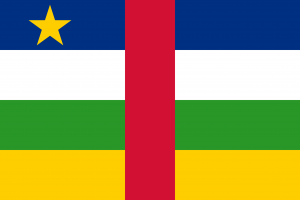Language/Sango/Grammar/How-to-Use-Be
Hi Sango learners! 😊
In this lesson, we will learn how to use the verb "be" in Sango. We will look at the different forms of the verb and how to use them in sentences.
Introduction
The verb "be" is one of the most important verbs in any language. It is used to express existence, identity, location, and other states of being. In Sango, the verb "be" is conjugated differently depending on the subject of the sentence. Let's take a look at the different forms of the verb "be" and how to use them in sentences.
Present Tense
The present tense of the verb "be" is used to express states that are currently true. The present tense of the verb "be" is conjugated as follows:
| Sango | Pronunciation | English Translation |
|---|---|---|
| mbi | m-bee | I am |
| nyi | n-yee | You are |
| azo | ah-zoh | He/She/It is |
| mbiw | m-bee-wuh | We are |
| nyiw | n-yee-wuh | You (plural) are |
| azow | ah-zoh-wuh | They are |
Here are some examples of the present tense of the verb "be" in action:
- Person 1: Mbi nde? (I am here?)
- Person 2: Ayo, nyi nde. (Yes, you are here.)
- Person 1: Azo ku? (Is he/she/it here?)
- Person 2: Ayo, azo ku. (Yes, he/she/it is here.)
- Person 1: Mbiw nde? (Are we here?)
- Person 2: Ayo, mbiw nde. (Yes, we are here.)
- Person 1: Nyiw nde? (Are you (plural) here?)
- Person 2: Ayo, nyiw nde. (Yes, you (plural) are here.)
- Person 1: Azow nde? (Are they here?)
- Person 2: Ayo, azow nde. (Yes, they are here.)
Past Tense
The past tense of the verb "be" is used to express states that were true in the past. The past tense of the verb "be" is conjugated as follows:
| Sango | Pronunciation | English Translation |
|---|---|---|
| mba | m-bah | I was |
| nya | n-yah | You were |
| aza | ah-zah | He/She/It was |
| mbaw | m-bah-wuh | We were |
| nyaw | n-yah-wuh | You (plural) were |
| azaw | ah-zah-wuh | They were |
Here are some examples of the past tense of the verb "be" in action:
- Person 1: Mba nde? (I was here?)
- Person 2: Ayo, nya nde. (Yes, you were here.)
- Person 1: Aza ku? (Was he/she/it here?)
- Person 2: Ayo, aza ku. (Yes, he/she/it was here.)
- Person 1: Mbaw nde? (Were we here?)
- Person 2: Ayo, mbaw nde. (Yes, we were here.)
- Person 1: Nyaw nde? (Were you (plural) here?)
- Person 2: Ayo, nyaw nde. (Yes, you (plural) were here.)
- Person 1: Azaw nde? (Were they here?)
- Person 2: Ayo, azaw nde. (Yes, they were here.)
Future Tense
The future tense of the verb "be" is used to express states that will be true in the future. The future tense of the verb "be" is conjugated as follows:
| Sango | Pronunciation | English Translation |
|---|---|---|
| mbo | m-boh | I will be |
| nyo | n-yoh | You will be |
| azo | ah-zoh | He/She/It will be |
| mbow | m-boh-wuh | We will be |
| nyow | n-yoh-wuh | You (plural) will be |
| azow | ah-zoh-wuh | They will be |
Here are some examples of the future tense of the verb "be" in action:
- Person 1: Mbo nde? (I will be here?)
- Person 2: Ayo, nyo nde. (Yes, you will be here.)
- Person 1: Azo ku? (Will he/she/it be here?)
- Person 2: Ayo, azo ku. (Yes, he/she/it will be here.)
- Person 1: Mbow nde? (Will we be here?)
- Person 2: Ayo, mbow nde. (Yes, we will be here.)
- Person 1: Nyow nde? (Will you (plural) be here?)
- Person 2: Ayo, nyow nde. (Yes, you (plural) will be here.)
- Person 1: Azow nde? (Will they be here?)
- Person 2: Ayo, azow nde. (Yes, they will be here.)
Conclusion
Now you know how to use the verb "be" in Sango. To improve your Sango Grammar, you can also use the Polyglot Club website. Find native speakers and ask them any questions!
➡ If you have any questions, please ask them in the comments section below.
➡ Feel free to edit this wiki page if you think it can be improved. 😎
Related Lessons
- Negation
- Questions
- Give your Opinion
- Pronouns
- Conditional Mood
- How to Use Have
- Adjectives
- Plurals
- Future Tense

